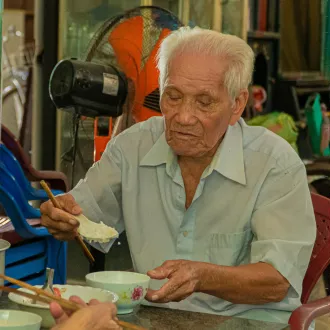Transcription Enteral nutrition and tube feeding
Nutrition is a critical aspect in the care of geriatric patients, and in some cases, alternative feeding methods are necessary to ensure that they receive the necessary nutrients. One such method is enteral nutrition, which involves the administration of nutrients through a tube.
In this session, we will explore enteral nutrition, when it is appropriate, how it is administered, and key considerations to ensure quality care in elderly patients.
Introduction to Enteral Nutrition
Enteral nutrition refers to the administration of nutrients directly into the gastrointestinal tract through a tube. This form of feeding is necessary when a patient is unable to take food orally due to swallowing problems, surgeries, neurological diseases or cancer. For geriatric patients, enteral nutrition can be a vital option for maintaining their nutritional status and quality of life.
Enteral nutrition may be necessary in geriatric patients in a variety of situations, including:
- Swallowing Difficulties: Swallowing problems are common in the elderly and may require the administration of liquid or pureed foods through a tube.
- Gastrointestinal Surgery: After certain surgeries, such as tumor resection, enteral nutrition may be necessary until the gastrointestinal system recovers.
- Neurodegenerative diseases: Patients with diseases such as Alzheimer's or Parkinson's may experience advanced swallowing problems, making enteral nutrition necessary.
- Cancer: Some cancer treatments may cause loss of appetite or nausea, making adequate oral intake difficult.
Types of enteral nutrition
There are different types of enteral nutrition, and the choice depends on the patient's needs and condition:
- Nasogastric (NG) tubes: these are inserted through the nose and are directed into the stomach. They are suitable for the short term.
- Jejunal (NJ) Catheters: These are inserted through the nose but are placed in the jejunum (part of the small intestine). Often used when the stomach needs to be bypassed.
- Gastrostomy (PEG): Involves insertion of a tube directly into the stomach through a surgical incision in the abdominal wall. It is more durable and suitable for long-term patients.
- Jejunostomy (PEJ): Similar to gastrostomy, but placed in the jejunum. Used when it is necessary to bypass the stomach completely.
Nutritional and Safety Considerations
To ensure that enteral nutrition is effective and safe in geriatric patients, the following guidelines should be considered:
- Nutritional Formulas: enteral formulas should be selected based on the patient's specific nutritional needs, such as the amount of protein, calories, and nutrients needed.
- Hygiene: Maintaining stric
power supply probe




